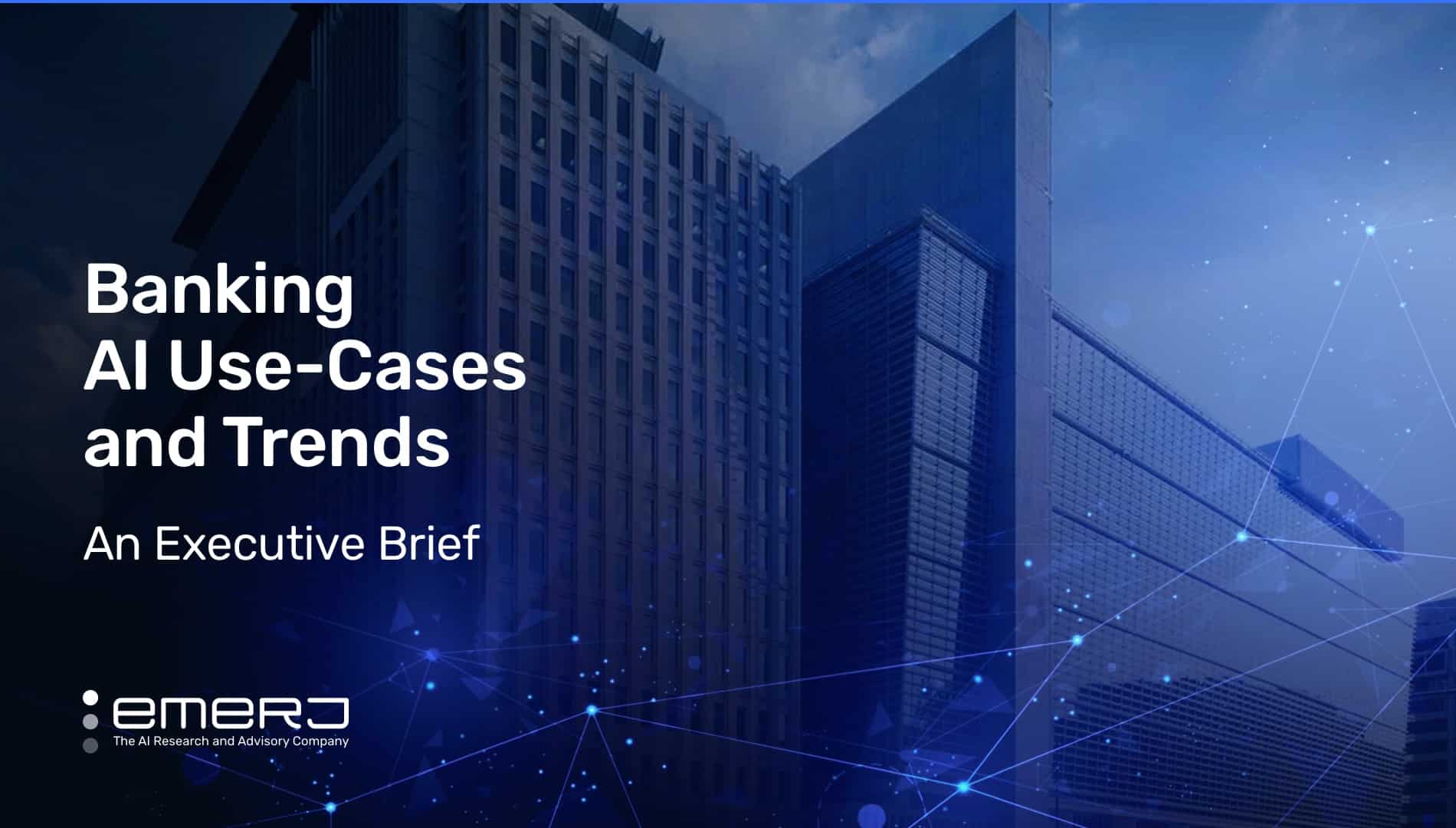Until recently, research has shown that banking companies have been somewhat hesitant regarding the business value of AI. A proliferation of external evidence indicates that the trend is quickly changing. According to a recent report by The Economist, 85% of IT executives in banking said they “had a clear strategy” for AI adoption in 2022.
AI spend mirrors these executives’ sentiment. In a research article published by Yahoo Finance, Banks’ AI spending is expected to grow from $3.9 billion in 2020 to over a trillion by 2030.*
Banking leaders who understand the value of AI and execute a solid strategy stand to add a lot of value to their organizations, including in higher revenues and lower costs.
Yet even these potential outcomes are perhaps secondary to an even more pressing driver of AI adoption: reduction and prevention of risk-related incidents. Included in the same category are fraud, AML, and cyberattacks. We will discuss these AI applications in more detail later in this article.
Realization of AI benefits requires that leaders:
- Understand current AI trends
- Know the use cases that are value-adding
- Understand and prepare for the challenges of AI adoption
We have created the following resource based on dozens of interviews with banking leaders and cutting-edge AI banking startups, along with secondary research. Its purpose is to help financial services leaders navigate the most important trends, use cases, and factors that lead to adoption.
Two overarching trends in AI in Banking are:
- Overhyping customer-facing AI and understating risk-related AI
- Natural language processing use-cases are numerous and wide-ranging
Among the most popular uses cases for AI in banking are:
- Fraud Detection
- Anti-money Laundering (AML)
- Cybersecurity
- Document Automation
We will also discuss two popular use cases for wealth management: insider trading-related compliance and external search.
AI Adoption Trends in Banking
We begin by first taking a look into these trends and their concomitant effects on banking investments in AI solutions.
As stated in a recent Deloitte whitepaper on the future of AI banking, for enterprises to reap the full benefits of AI capabilities, “banks must move beyond the hype and consider the practical applications of AI, discover use cases for mainstream deployment of AI, and how to enable successful implementation.”
Overhyping Customer-facing AI, Understating Risk-related AI
Our in-depth industry research – along with interviews with leaders from some of the biggest financial firms – has made it clear that customer-facing AI (e.g., chatbots) has been exaggerated for years.
Today’s banks try to attract customers by appearing convenient and modern while enhancing their image as tech-savvy. One way they do so is by hyping a high-end, nuanced chatbot or user interface that supposedly streamlines customers’ financial experience.
In a majority of cases, these pilot projects don’t reach maturity. In fact, most downright fail.
The investment dollars do not follow the hype either. So much was true back in 2020 and it is true today, although the hype is waning somewhat, in large part due to the sunsetting of chatbot hysteria.
Concurrently, banks are understating risk-related applications, like fraud prevention, anti-money laundering (AML), cybersecurity, and compliance. We may ascribe the correlation here in AI investment to banks’ desire to appear modern and convenient rather than risk-averse and timid.
Natural Language Processing Use Cases Remain Ubiquitous
Natural language processing (NLP) continues to find many uses in banking AI applications. Among the most universally recognizable forms of NLP implementation today are chatbots, reflecting a previous mass adoption of companies looking to dip their toe in the water of AI in general, and NLP in particular.
As we’ve noted prior, banks as a whole tend to overstate the traction and ROI of bots. But while both the chatter and use of bots are declining, NLP as a whole is not.
Emerj’s AI in Banking Opportunity Landscape report found that approximately 80% of all banking AI applications involve natural language processing. A few popular example applications of NLP include information retrieval, intent parsing, and sentiment analysis.
While document automation and related use cases are perhaps the most common, there are many additional areas of banking where NLP can potentially add value.
In the case of ING Wholesale Banking, for example, NLP was used to analyze the contents of customer emails to ensure the proper registration and routing of support tickets. Sudhanshu Sawlani, Head of Robotics and Intelligent Automation for ING, said that this NLP classification-type project both streamlined operations and saved his company money.
To further discuss popular use cases in banking beyond these examples, we will differentiate AI applications between retail banking and wealth management.
Most Common AI Use Cases in Retail Banking
Next, we will discuss the most common use cases we have found based on interviewing the heads of AI at global financial service firms and leading startups.
Fraud Detection
AI-enabled fraud detection is arguably the most common and vital use case for financial institutions. While customer-facing AI is exciting, it’s the fear of massive loss – both of money and of face – that keeps banking execs’ wheels turning. The fact that fraud occurrences are sharply trending upward only adds to the unease.
In our research, it was very difficult to find an aggregate amount, from a highly-credible source, of what fraud costs the banking industry annually. That sum is likely in the high tens of billions of dollars, if not hundreds of billions – and the amount is climbing.
Per a PwC study, the three “most disruptive events” to financial institutions’ operations are all fraud-related. Banks cite consumer fraud as the most disruptive, at 27%, followed by cybercrime (15%) and accounting/financial statement fraud (14%).
One of the more promising and powerful applications is anomaly detection, an ML technique that identifies patterns of data outliers by comparing historical use data (e.g., recent credit card purchase activity versus past purchase trends). Besides being a consumer fraud solution, anomaly detection is also a possible solution for certain anti-money laundering (AML) and cybersecurity-related use cases.
In one Emerj verified use case, PayPal built a machine learning and graphing analysis solution to protect merchants from fraud. The company used a dynamic graph analysis component of the AI model, enabling the near-real-time evaluation of data to detect and prevent fraudulent activity.
Below is a short 2-minute video from Paypal that highlights some of the features of its solution:
Another powerful AI application to prevent and detect fraud is the near-real-time analysis of customer transactions using machine learning on graphs.
Anti-Money Laundering (AML)
AML regulations are extremely strict, and the fines for violating said regulations are massive.
In a recent case against Credit Suisse, the Switzerland Federal Criminal Court found the bank guilty of failing to prevent money laundering and the bank was fined the equivalent of $2.1 million. In another, a bank in Abu Dhabi was fined $3.8 million for “failing to set up the necessary controls” to prevent money laundering.
Penalties for banks for poor AML controls cost not only money but the loss of customer satisfaction and, perhaps most critically, customer trust. Consider, on the other hand, what would seem to be the minor issue of having superfluous false positives by comparison.
According to another Deloitte whitepaper, antiquated methods of combating money laundering results in numerous that use financial institutions’ “limited resources to close off non-material and unimportant alerts” that are “manual and onerous.”
Poor customer experience, over time, costs banks in terms of lost business and a damaged reputation.
Fortunately for banking leaders, AML is a powerful use case for AI, particularly machine learning because detecting patterns is one of machine learning’s unique capabilities.
AI overall is capable of helping humans evaluate massive databases against multiple variables and decide on the next best course of action. Machine learning itself can look at one of a billion transactions and ask the following questions:
- Does this transaction match the pattern of normal?
- Does this transaction diverge from the pattern of normal?
- Does this transaction match the pattern of fraud?
Cybersecurity
In a recent Wall Street Journal article, U.S. authorities cautioned banks about the potential for increased Russian cyberattacks due to strong American support for the Ukraine government in the ongoing conflict.
Similar to AML and fraud, the threat of cyberattacks grows ever more challenging to combat given increasing levels of technical sophistication. Ransomware, phishing, and bot attacks are all significant threats to financial data.
Previously at Emerj, we uncovered use cases highlighting how AI is used for cybersecurity in banking. Examples of AI technology used for this purpose include anomaly detection to pinpoint strange transaction data and natural language processing to scan and flag emails that may be suspicious.
Below is a short video of the Cognito software from Expert System, a vendor that Emerj has reported on that offers NLP-based cybersecurity solutions for banks:
Document-Related Workflows/Search and Discovery
Now that we have covered three examples of risk-focused use cases, we will pivot our focus to a more “efficiency-focused” use case for AI: automation of document workflows.
As discussed prior, banks and other financial institutions continue to use a lot of paperwork, particularly in their back-office operations. Sifting and searching through said paperwork, especially contracts and other sensitive legal documents, costs time and money.
There are several widely applicable use cases for document-related workflows. Document intake and scanning, and search and discovery are two of the more common. How often do banks need to search for specific data within a specific document within a certain time?
An everyday example exists in customer service, where sales agents and bankers need to find product information for a customer who is running into a meeting.
AI-enabled document search and discovery (DSD) could allow the bank employee to bring up a digitized document and conduct a built-in, customized search quick enough for the going customer. The same technology can assist more applications such as credit scoring, mortgage generation and approval, patent applications, and others.
In a related prior use case analyzed by Emerj, HSBC partnered with Element.AI, which offers AI-powered document search solutions.
HSBC wanted a solution that would allow them to auto-tag new information with metadata to enhance search capabilities. Such a function gave the company the means to more accurately and quickly search for and retrieve document data, such as when a customer requests certain personal data to be altered or deleted within the company database.
Below is a short video from element.AI demonstrating some of the features of document intelligence solution:
Most Common AI Use Cases in Wealth Management
Compliance – Insider Trading
The use of machine learning models to identify patterns of behavior indicative of possible insider trading is an emerging use case in wealth management. Two additional AI capabilities apply to these use cases and will be useful to keep in mind:
- Natural language processing: to screen internal communications such as emails for possible intent to commit insider trading.
- Anomaly detection: identifying a pattern of transactions where shares are being bought or sold before a major event such as an earnings announcement.
External Search
Wealth managers are increasingly transforming into “quantamental investors,” expanding their search for more non-conventional data sources to gain an advantage in picking stocks.
Such a workflow is widely considered the future of wealth management, and even the most prestigious wealth management firms in the world, such as Morgan Stanley, are saying so.
Examples of such potential external data sources might be:
- Sentiment analysis of a bank’s Twitter channel using NLP
- Satellite imagery of a retail chain’s parking lot to correlate traffic with sales
After a trader closely examines the typical information – stock market, economic data and company performance data – they decide they need more granular information. To get this information, they use external search for images of the country’s commercial infrastructure to help them make an investment decision.
Factors that Lead to Adoption
Compliance
Compliance is a major market driver for AI adoption because banks are subject to language- and number- driven regulations that are strictly enforced, onerous to implement and costly if violated. Successful vendors understand the challenges involved and respond accordingly with new solutions wherever there are new regulations.
An excellent example of the aforementioned is when LIBOR interest rates officially ceased being considered the international standard last year. As a result, banks found themselves swimming in – and on the hook for – millions of contracts using or referring to LIBOR-dependent interest rates.
AI vendors knew that these banks would need a document search and discovery solution to find LIBOR risk inside of existing contracts and adjust accordingly. Even one of the “Big Four” accounting firms, KPMG, offered its own solution.
Of course, the trajectory of AI adoption in finance compliance will not end with LIBOR. There exist overarching compliance frameworks that are massive in scope, nuanced, and subject to either expiration or evolution.
Risk
Risk is the biggest reason why AI appeals to banking leaders, and they will invest in applications that mitigate risk before anything else. In our interviews with dozens of banking experts, we confirmed that bank leaders’ strongest desire is to automate repetitive and tedious risk-related tasks and ensure safety from increased regulatory standards.
Hence, why the top AI adoption drivers are all risk-related. In a previous Emerj report, we found that risk-related AI applications (risk management, lending, compliance, fraud, and cybersecurity) accounted for 72% of the funds raised for AI vendor companies.
Vendors pitching an AI solution to banking institutions know from experience that defensive value propositions win out over offensive nearly every time.
The reason for the defensive positioning we often see in banking is because leaders view AI primarily as a means of risk-reduction, not one that will transform their business model or give them access to new markets.
Slow, Process-Heavy Workflows
In an industry like banking where paperwork is still duplicitous, cumbersome, and involves much intensive input from employees, automated document AI solutions are self-evident. Processes such as mortgage document work, loan underwriting, digitization, storage, and search of invoices remain inherently language- and process-heavy.
A perfect example of the ongoing problem could be found in the early to middle stages of the pandemic. The federal government included billions of dollars for small businesses, entrepreneurs, and others in its fiscal stimulus package. Then customers began flooding banks with loan applications in numbers the existing infrastructure could not handle.
Head of Business Operations at Migros Bank Christophe Makni, shared a few document-related NLP use cases he’s seen with his employer, all of which strike a familiar tone:
“Generally, a use case here [at Migros] is trying to automate the document processes, which is where you get different kinds of paper documents from a customer [from] mortgage processes, or any kind of credit or financing, [or] account opening. You always get some paper somewhere.”
– Christophe Makni, Head of Business Operations at Migros Bank
* Editor’s note: The original version of this article that was published on August 31, 2022 cited an article from Yahoo Finance published earlier that year that cited the same source predicting AI investment would reach $86 billion by 2030. It has since been updated to reflect current statistics as of February 23, 2023.




















